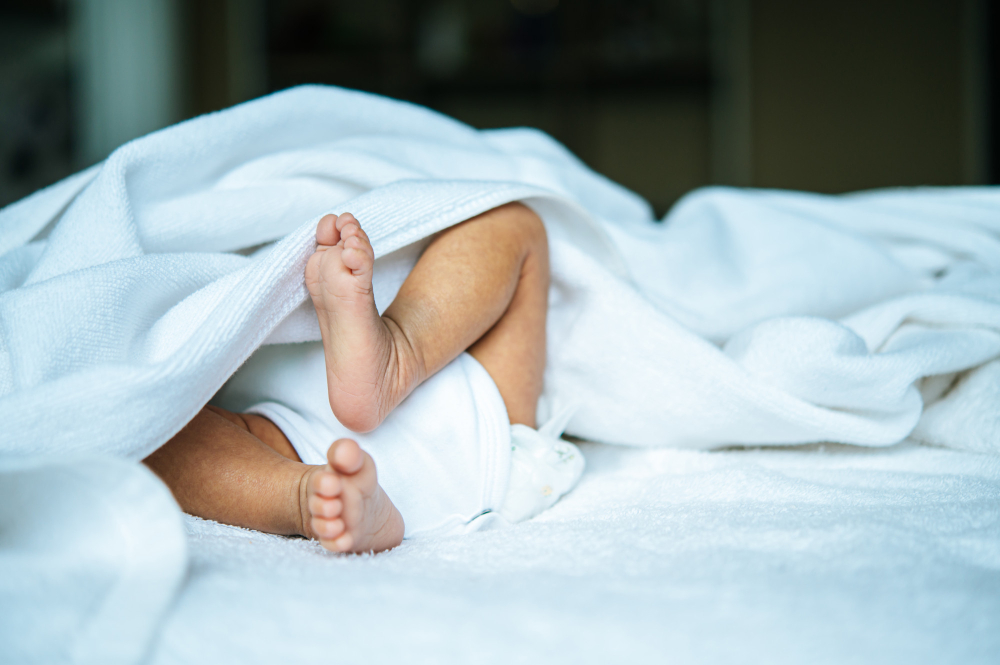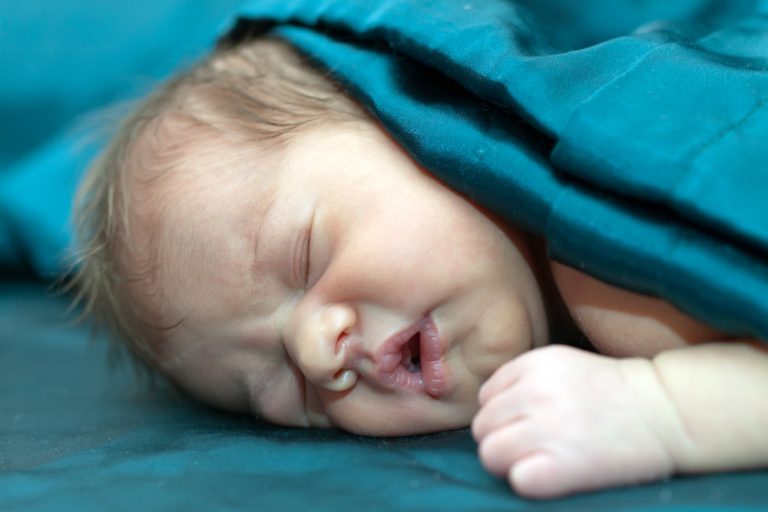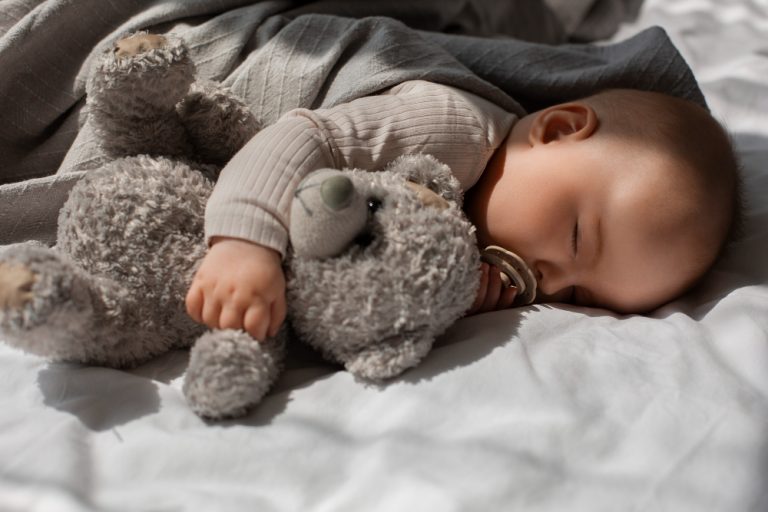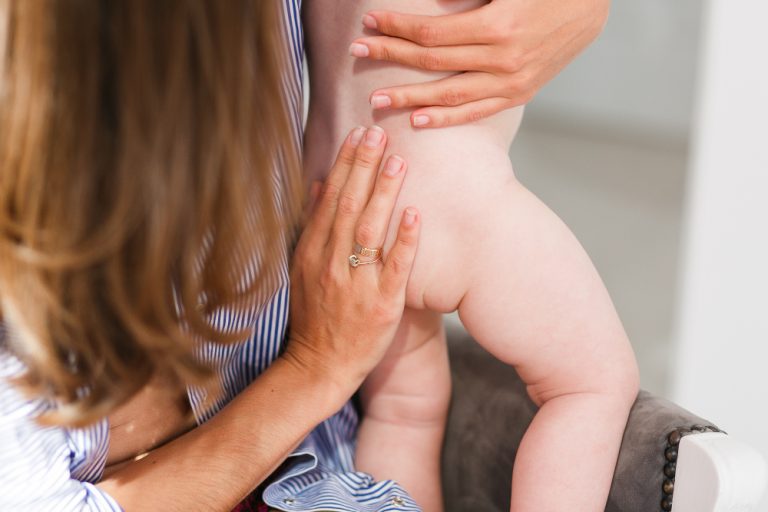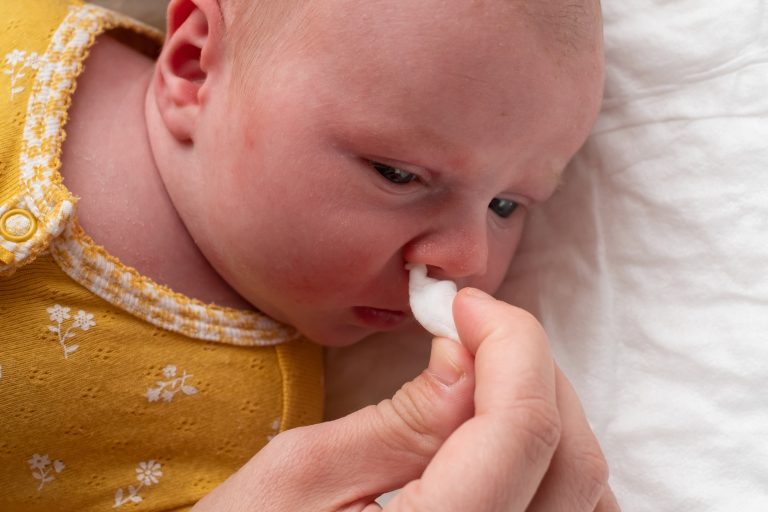How To Treat Restless Leg Syndrome In Babies? RLS in Babies
Do you ever feel the urge to move your legs when you’re trying to sleep? It can be frustrating and keep you up all night, right? Well, imagine seeing your baby experiencing the same discomfort. If you have already seen your little one with such discomfort and are wondering how to treat restless leg syndrome in babies, you are not alone.
Witnessing your little one struggling with Restless Leg Syndrome (RLS) can be distressing. But don’t worry—understanding and addressing RLS can significantly improve their sleep quality and overall well-being.
In this article, “How To Treat Restless Leg Syndrome In Babies?” we’ll explore RLS in babies, discussing its symptoms, causes, diagnosis methods, and most importantly, treatment options. So, let’s dive in!
Understanding Restless Leg Syndrome (RLS) in Babies
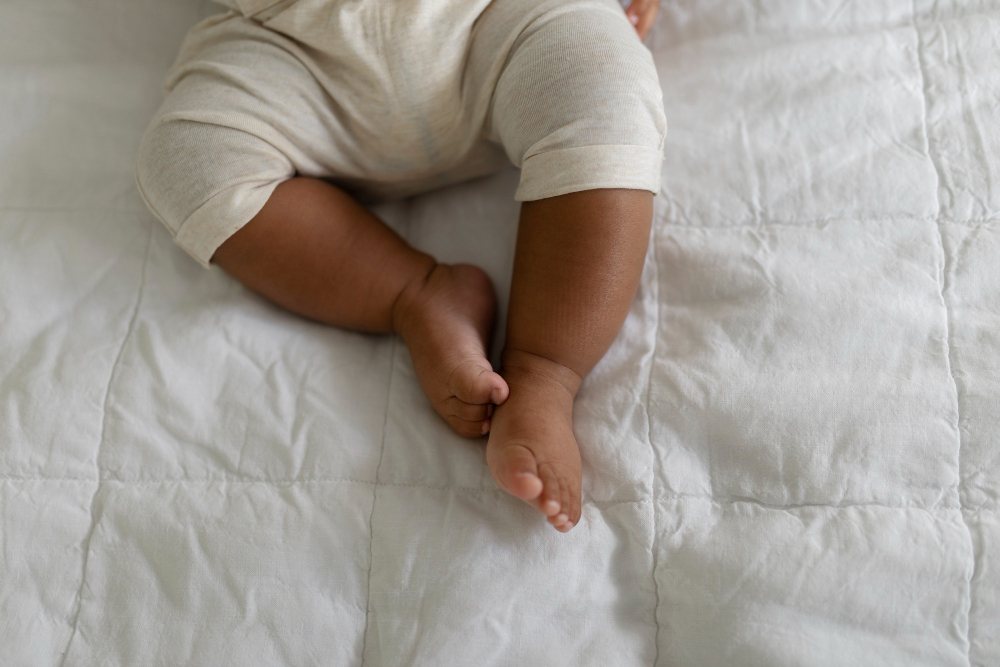
Diagnosing RLS in babies can be challenging due to their limited communication abilities. However, observing specific behavioral patterns can provide clues. Here’s a breakdown of RLS in babies:
Symptoms
- Fussiness and irritability, particularly in the evening and at night
- Difficulty falling asleep or staying asleep
- Frequent leg movements during sleep (observed through monitoring)
- Pulling or kicking at the legs
- Redness or warmth in the legs (not always present)
It’s important to note that these symptoms can also be indicative of other conditions like gas, teething, or hunger. Consulting a pediatrician for a proper diagnosis is crucial.
Causes
The exact cause of RLS in babies remains unknown. However, several potential factors are suspected to contribute:
- Iron deficiency
Iron plays a vital role in dopamine production, a neurotransmitter involved in movement regulation. Low iron levels can disrupt dopamine function, leading to RLS symptoms.
- Family history
Babies born to families with a history of Restless Legs Syndrome (RLS) are at a higher risk of developing the condition themselves.
- Certain medications
Medications like antihistamines or some antidepressants can trigger RLS in some individuals, including babies.
- Medical conditions
Underlying medical conditions like ADHD or peripheral neuropathy may be associated with RLS in babies.
Diagnosing RLS in Babies
Unfortunately, there’s no single definitive test for diagnosing RLS in babies. Pediatricians typically rely on a combination of factors:
- Detailed medical history
It is crucial to discuss your baby’s symptoms, sleep patterns, and medications with the healthcare provider. This information can help the provider diagnose and treat any underlying health conditions effectively, ensuring your baby’s optimal health and well-being.
- Physical examination
When you take your baby to a pediatrician, they will conduct a thorough assessment of your baby’s overall health. They will check your baby’s vital signs, such as weight, height, and head circumference, and look for any signs of underlying conditions.
The pediatrician will also examine your baby’s skin, eyes, ears, nose, throat, heart, lungs, abdomen, and hips, to ensure that everything is developing normally. This assessment is important for identifying any potential health issues early on and ensuring that your baby receives the appropriate care and treatment.
- Sleep study (polysomnography)
While not always necessary, a sleep study can monitor your baby’s brain waves, heart rate, breathing, and leg movements during sleep, providing valuable insights into potential sleep disorders like RLS.
How To Treat Restless Leg Syndrome In Babies?

The good news is that RLS in babies is often manageable with non-invasive approaches. Here’s an overview of treatment options:
- Addressing iron deficiency
Ensuring your baby receives adequate iron through breastmilk, iron-fortified formula, or iron supplements, if recommended by your pediatrician, can significantly improve RLS symptoms.
- Soothing Techniques
Creating a calming bedtime routine with warm baths, gentle massages, and soft music can help relax your baby and alleviate RLS discomfort.
- Heat therapy
Applying a warm compress to your baby’s legs can provide temporary relief from RLS symptoms.
- Positioning
Experimenting with different sleep positions may help. Some babies find relief lying on their stomach or side.
- Addressing underlying conditions
If an underlying medical condition is contributing to RLS, treating the primary condition can improve overall well-being and potentially alleviate RLS symptoms.
Medications for RLS in Babies
In some cases, medication may be necessary if non-invasive approaches fail to provide adequate relief. However, it’s important to understand that:
- Medications for RLS in babies are typically reserved for severe cases that significantly disrupt sleep.
- Medications used for adult RLS may not be suitable for babies due to potential side effects.
If you suspect your baby has RLS, consult your pediatrician promptly. Early diagnosis and intervention can significantly improve your baby’s sleep quality and overall well-being. Remember, you’re not alone in this journey. Resources and support groups are available to help you navigate this challenge.
Living With Restless Legs Syndrome (RLS) in Babies

While RLS can be disruptive, with proper management, it doesn’t have to significantly impact your baby’s life. Here are some additional points to consider:
- Impact on Development
Studies suggest a potential link between RLS and developmental delays in some children. Early diagnosis and treatment can help minimize this risk.
- Sleep Hygiene
Establishing a consistent sleep schedule with regular bedtimes and wake-up times can significantly improve sleep quality for babies with RLS.
- Patience and Consistency
Managing RLS may require patience and consistency. Don’t get discouraged if you don’t see immediate results. Keep track of what works for your baby and adjust your approach as needed.
Coping with a baby experiencing RLS can be challenging. Here are some additional tips and resources to support you on this journey:
Creating a Sleep-Friendly Environment
- Temperature regulation
Ensure your baby’s room is cool and comfortable. Overheating can worsen RLS symptoms.
- Light management
Dim the lights or use blackout curtains to create a sleep-inducing environment.
- White noise
Consider using a white noise machine to mask any external noises that might disrupt sleep.
Additional Soothing Techniques: How To Treat Restless Leg Syndrome In Babies?
- Swaddling
Swaddling can provide a sense of security and comfort, potentially reducing RLS discomfort, particularly for younger babies. (Always ensure safe swaddling practices and transition out of swaddling when your baby shows signs of rolling.)
- Light leg stretches
It’s a good idea to gently stretch your baby’s legs before bedtime. This can help improve their circulation and potentially reduce any discomfort they might be feeling.
- Essential Oils
Certain essential oils like lavender are known for their calming properties. However, use extreme caution with essential oils around babies. Never apply essential oils directly to a baby’s skin and consult your pediatrician before diffusing them in a room where your baby is present.
Complementary Therapies: How To Treat Restless Leg Syndrome In Babies?
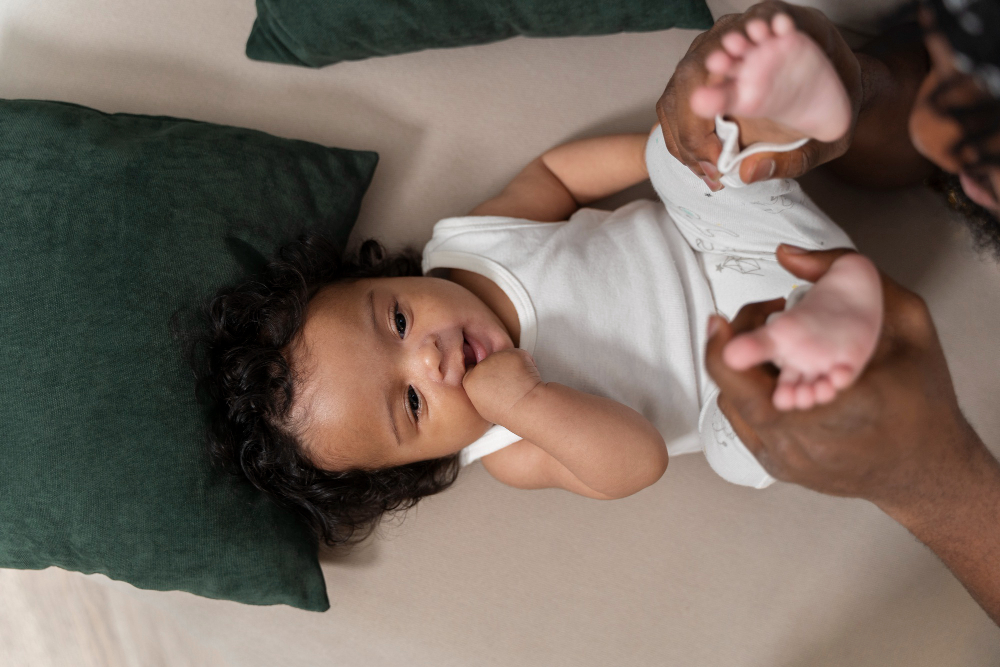
While not a substitute for traditional treatment, some complementary therapies may offer additional support for babies with RLS. However, it’s crucial to discuss these therapies with your pediatrician before incorporating them into your baby’s routine:
- Gentle Yoga/Stretches
While formal yoga may not be suitable for very young babies, incorporating gentle leg stretches and movements into your baby’s daily routine can provide some relief.
- Acupuncture
Studies on the effectiveness of acupuncture for RLS in children are limited, but some research suggests potential benefits. Pediatric acupuncturists can tailor treatments specifically for babies.
- Probiotics
Research suggests a potential link between gut health and RLS. Consulting a healthcare professional about incorporating probiotics into your baby’s diet may be worth exploring.
Dietary Considerations
- Iron-rich foods
If you have started feeding solid foods to your baby, it’s important to include iron-rich options in their diet. You can opt for fortified cereals, meat, poultry, and lentils which are excellent sources of iron. This would help in meeting your baby’s nutritional requirements and support their healthy growth and development.
- Limiting caffeine
It’s worth noting that Restless Legs Syndrome (RLS) symptoms can worsen due to caffeine, even in small amounts. If you are a nursing mother and consume caffeinated drinks, it is important to be aware of the hidden sources of caffeine in breast milk or formula, as they can also aggravate the RLS symptoms in your baby.
Building a Support Network
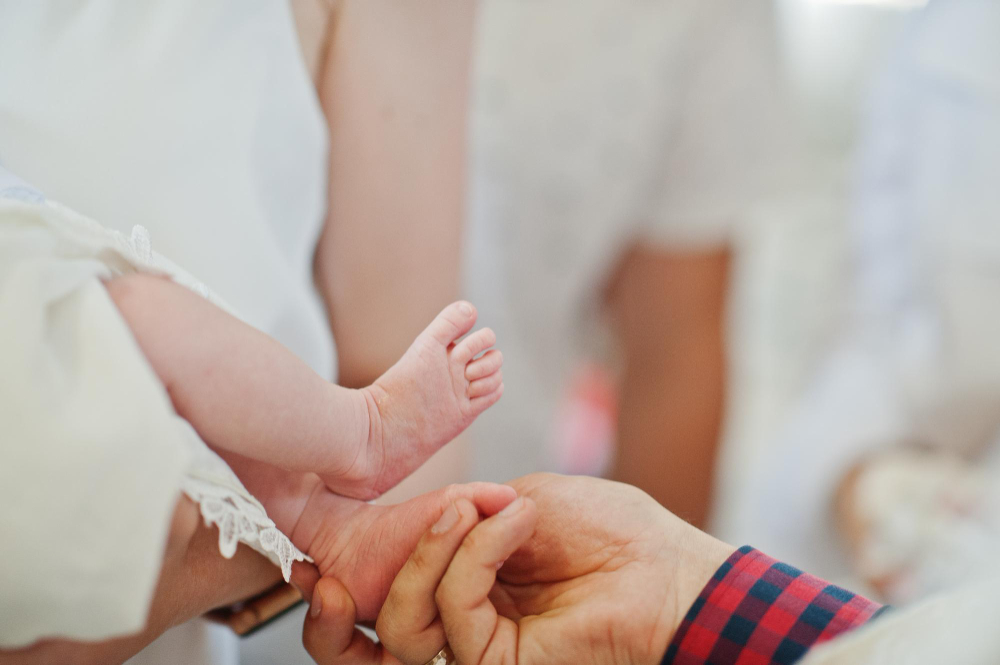
- Connect with other parents
Online forums and support groups for parents of children with RLS can provide valuable information, shared experiences, and emotional support.
- Seek professional guidance
A pediatric sleep consultant can offer personalized advice on creating a sleep routine tailored to your baby’s specific needs and RLS challenges.
Recommended Resources
- National Sleep Foundation
sleepfoundation.org provides comprehensive information on RLS, including resources for parents.
- Mayo Clinic
https://www.mayoclinic.org/diseases-conditions/restless-legs-syndrome/symptoms-causes/home/ovc-20377163 offers a detailed overview of RLS, including causes, symptoms, and treatment options.
- Restless Legs Syndrome Foundation
https://www.rls.org/ provides resources and support specifically for individuals with RLS, including information for parents of children with RLS.
Every baby is unique, and what works for one might not work for another. Be patient, experiment with different approaches, and communicate openly with your pediatrician to find the most effective strategies to manage your baby’s RLS and ensure they get the restful sleep they need to thrive.
FAQs: How To Treat Restless Leg Syndrome In Babies?
The Final Note: How To Treat Restless Leg Syndrome In Babies?
Restless Leg Syndrome (RLS) in babies can cause discomfort and interfere with their sleep. However, there are effective strategies available to manage this condition. By implementing the following tips on how to treat restless leg syndrome in babies, creating a supportive environment, and working closely with your pediatrician, you can help your baby experience improved sleep quality and overall well-being:
- Establish a bedtime routine that promotes relaxation and calmness
- Massage your baby’s legs
- Use warm or cool compresses to ease discomfort
- Keep the room quiet, dark, and cool
- Avoid overstimulating activities before bedtime
- Consider using a pacifier or white noise machine to soothe your baby
We understand that dealing with RLS in babies can be challenging for parents. Therefore, we encourage you to share your experiences, ask questions, and provide support to others who may be going through a similar situation in the comments section below. Together, we can build a supportive community for parents navigating RLS in their babies!

